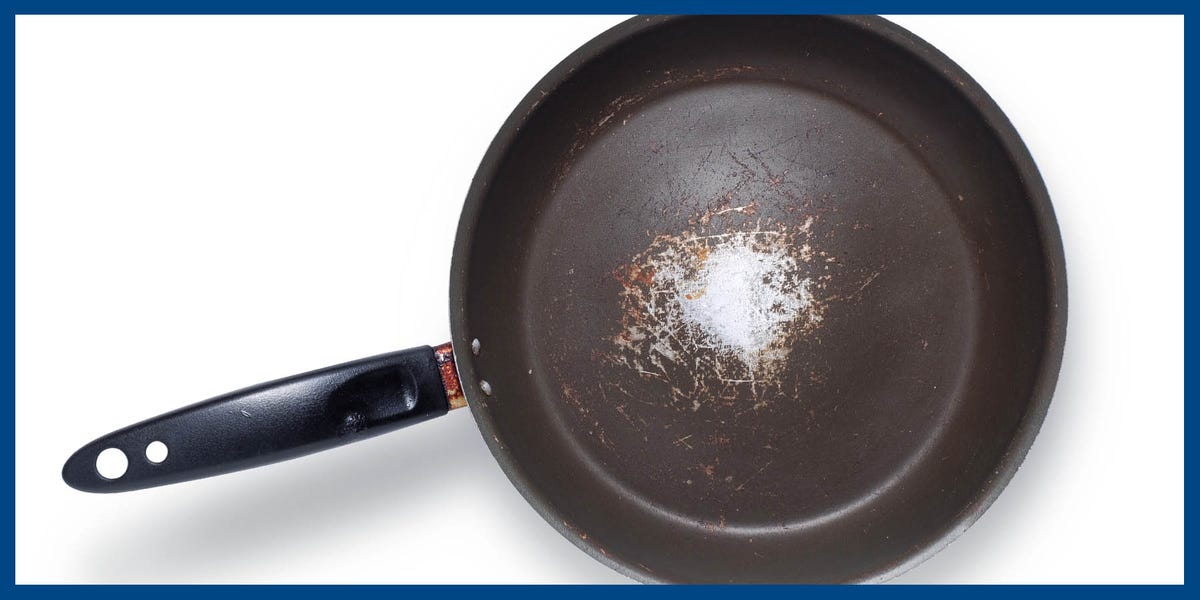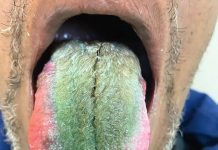You should replace them more often than you think.

If you’ve ever struggled to make eggs in a stainless-steel pan or discarded too many failed crêpes, you know how important nonstick pans are in any kitchen. While not ideal for every cooking project, their slick surfaces are essential when preparing particularly delicate dishes.
But for every nonstick super-fan, there are at least two skeptics. You’ve likely heard horror stories about the dangers of nonstick pans. And they’re not entirely unfounded. Multiple studies found that the presence of per- and polyfluoroalkyl substances (or PFAS) used in older nonstick pans had links to cancer.
And as if that wasn’t scary enough, many people have argued that PFAS and other dangerous chemicals were present in higher levels when nonstick pans were scratched through regular use.
Since a federal ruling in 2013, those compounds are now prohibited in all American-made nonstick cookware. And many brands adapted by introducing less dangerous methods for slick surfaces. Even still, some still say that scratched pans present health risks. So we decided to do some digging.
Is My Scratched Nonstick Pan Dangerous?
Most likely not. But there are some caveats. The answer will depend on which pan you’re using. If you’re using an old hand-me-down pan or your cookware is from a brand made outside the United States, there is a significantly higher likelihood that it’s made with dangerous chemicals.
Another important factor is the type of cooking you’re doing with your nonstick pan. Products with measurable amounts of PFAS have can release harmful chemicals into the air when heated past 500°F. So, if you’re searing steaks at high heat or preheating your pan on high for prolonged periods of time, you could be inviting unwelcome fumes into your home.
For those of us that are using newer models of nonstick cookware made in the United States, health risks associated with scratches are unlikely.
So, Should I Keep Using A Scratched Pan?
No. While they don’t necessarily present a safety concern, you still shouldn’t hold onto your scratched nonstick pans. If the scratches are fresh, you may end up with flakes of the coating in your food—which we can all agree is not delicious.
It can also impact how effective your pan’s nonstick abilities are. Scratches, high heat, and general wear and tear will wear down the slick coating on the surface of your pan. And depending on how frequently you use it and how well you maintain it, a brand new pan can lose its nonstick abilities in just a year or two.
Unlike products made out of cast iron and stainless steel, nonstick pans aren’t meant to stay with you forever. And if yours already has a few scratches, then it’s definitely time to part ways.
What’s The Best Way To Maintain A Nonstick Pan?
When choosing a nonstick pan for your kitchen, you don’t necessarily need to splurge. In our roundup of the best pans on the market, most of our top contenders cost less than $50. You can get a good-quality product for a relatively low price. That way, when the time comes that you inevitably need to replace it, it won’t feel like a waste of money.
But to really get the most bang for your buck, maintenance is key. Part of that involves using the right tools—that means no metal utensils ever. Instead, we recommend using silicone or wood-based materials when cooking on your nonstick pan.
The same applies for the ingredients you’re using. Even though your pan is nonstick, adding oil and butter when cooking is recommended. “You never want to heat a nonstick pan without anything in it, so using oil helps you not overheat it ultimately,” says Nicole Papantoniou, Director of the Good Housekeeping Institute’s Kitchen Appliances & Culinary Innovation Lab.
One product you should never use? Nonstick cooking spray. This product leaves behind a film that can become permanently stuck to the surface and compromise your pan’s slick surface.
The next most important factor when it comes to taking care of your cookware is cleaning it properly. Even though many brands brag about their pan’s ability to withstand the dishwasher, we still don’t recommend it. Any rapid temperature changes in general also won’t do your pan any favors.
“The biggest faux pas with a nonstick, or any pan, is that cooks tend to put the pan straight in the sink and run water over it to soak it in hopes of helping the cleaning process,” says Delish’s senior culinary producer Natalie Lobel. “This warps the pan and can also separate the non-stick coating faster.”
So when you’re done using your nonstick pan, allow it to cool before giving it a hand wash. With proper materials and careful cleaning, your nonstick pans are completely safe to use and can last for years.
When’s the last time you replaced your nonstick pan? Let us know in the comments.











